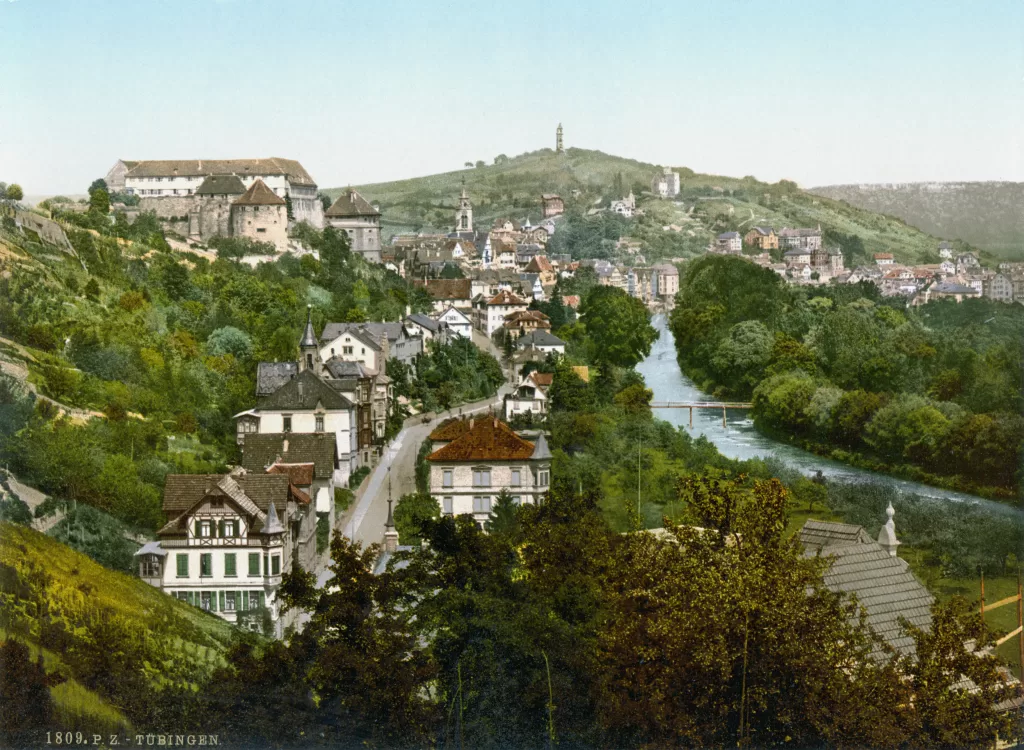 In this installment of my birthday trip series, I’m excited to introduce you to a small, yet charming town – Tübingen, located in the state of Baden-Württemberg. Situated on a hill and crisscrossed by a river that runs through its medieval old town, Tübingen is a place that has won my heart. Adding to its charm is the influx of young energy from students at Universität Tübingen.
In this installment of my birthday trip series, I’m excited to introduce you to a small, yet charming town – Tübingen, located in the state of Baden-Württemberg. Situated on a hill and crisscrossed by a river that runs through its medieval old town, Tübingen is a place that has won my heart. Adding to its charm is the influx of young energy from students at Universität Tübingen.
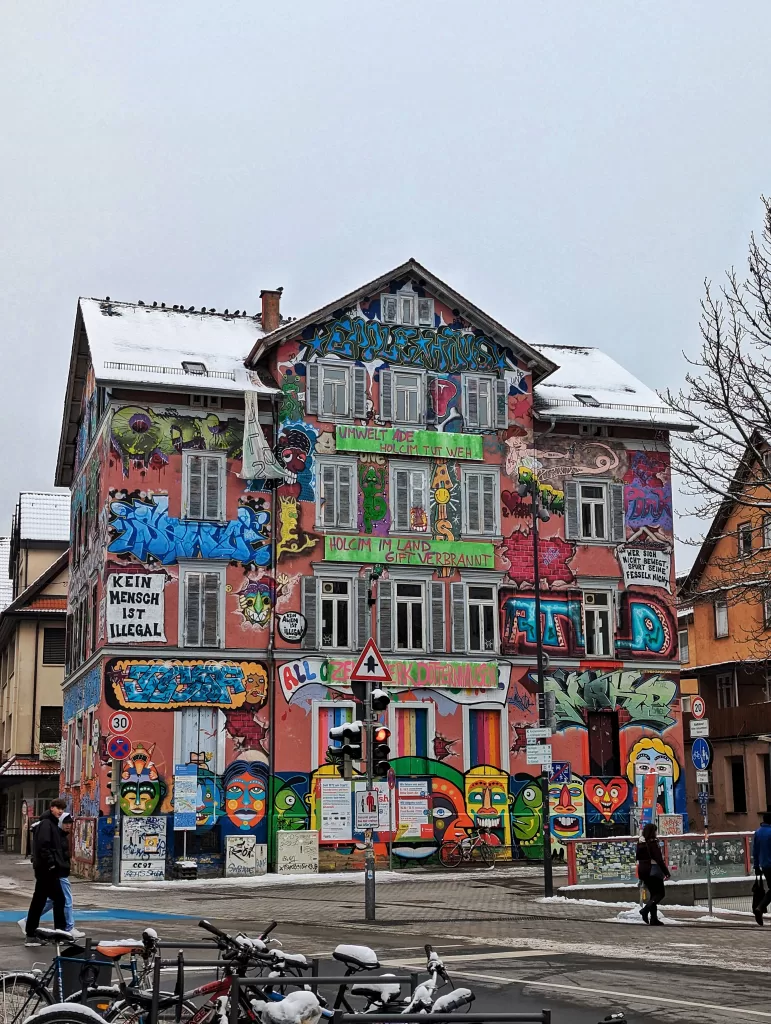 Although the initial purpose of our trip was to visit the nearby Lichtenstein Castle, Tübingen was only supposed to be a pit stop for meals. However, the town’s beauty unexpectedly seized my attention and refused to let go.
Although the initial purpose of our trip was to visit the nearby Lichtenstein Castle, Tübingen was only supposed to be a pit stop for meals. However, the town’s beauty unexpectedly seized my attention and refused to let go.
Making our way from Tübingen Hbf (main station) to the old town, we stumbled upon a house that was a canvas for graffiti. But this wasn’t just any graffiti—it was art with a message. The words “Kein Mensch ist illegal” (No human is illegal) stood out, making a progressive statement.
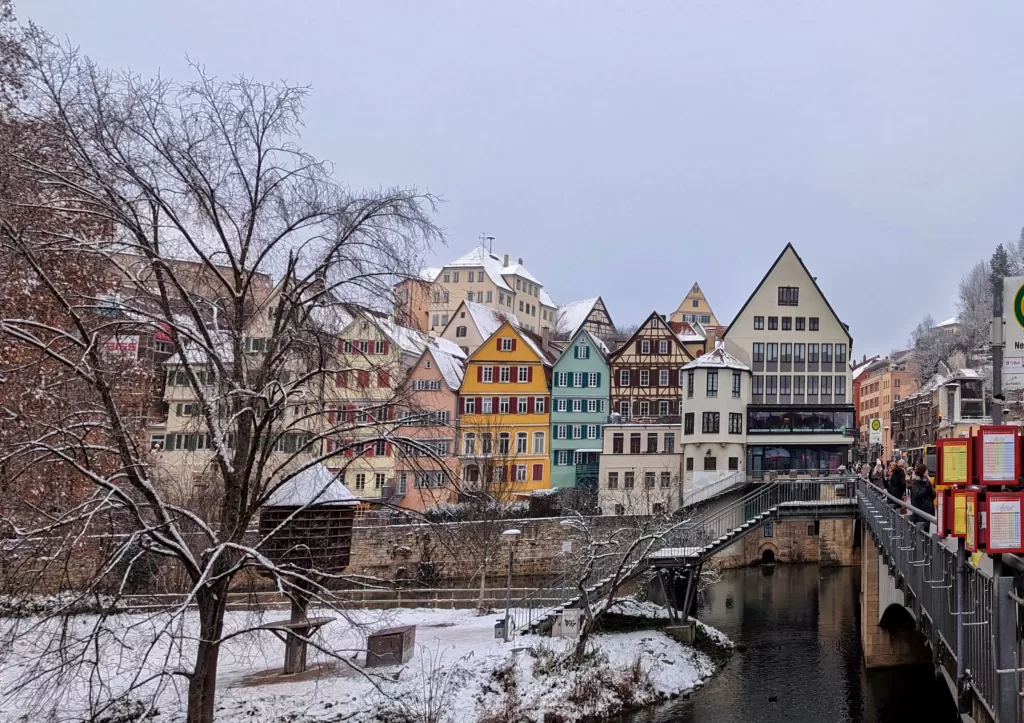 Before crossing the bridge over the river, we were greeted by traditional half-timbered houses (Fachwerkhaus), their facades painted in colors. They evoked scenes from the animated film Howl’s Moving Castle.
Before crossing the bridge over the river, we were greeted by traditional half-timbered houses (Fachwerkhaus), their facades painted in colors. They evoked scenes from the animated film Howl’s Moving Castle. 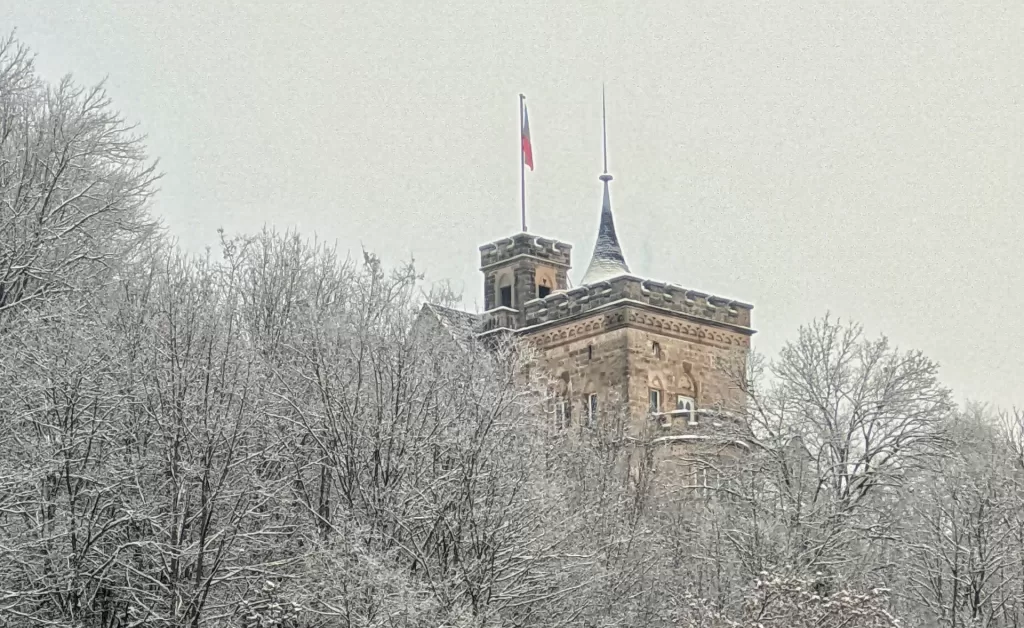 A slight turn of the head to the right, the keep and towers of a castle emerged from behind the trees. I was amazed at the architectural diversity that this small town offered within just a 10-minute walk.
A slight turn of the head to the right, the keep and towers of a castle emerged from behind the trees. I was amazed at the architectural diversity that this small town offered within just a 10-minute walk.
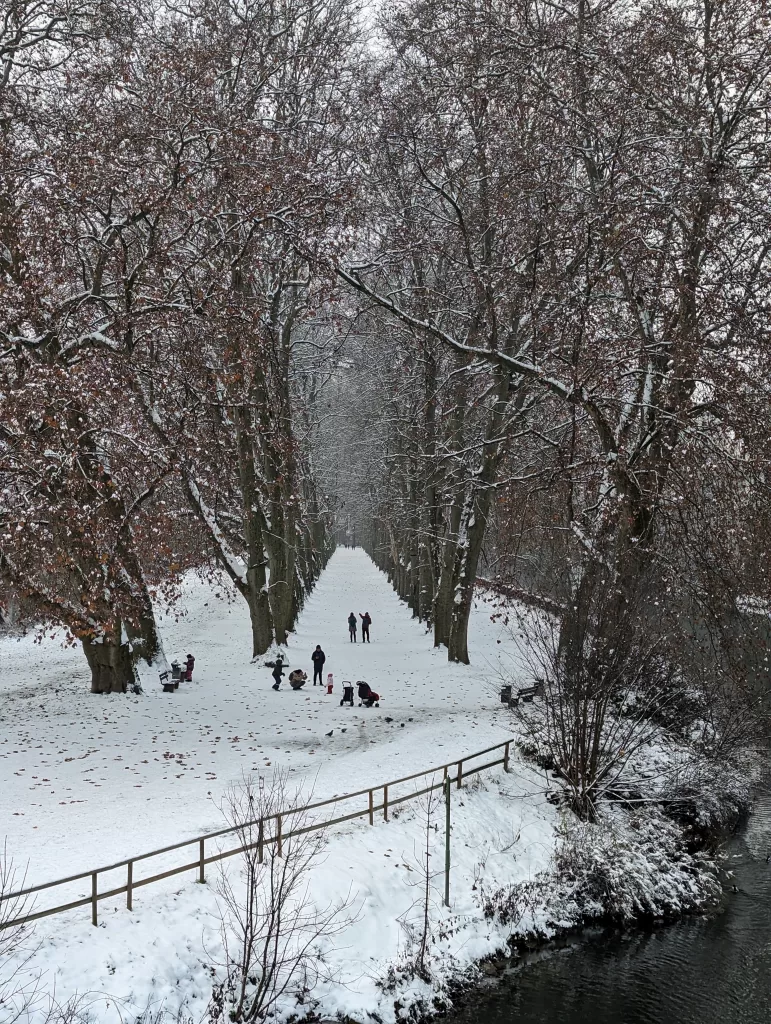 Next to the bridge, known as Neckarbrücke, is a slender island in the river. This natural space serves as a communal playground for the town’s residents, offering opportunities for walks, relaxation by the river, and even snow play in the winter. While the island is a gem, Tübingen also boasts several other parks that contribute to its natural beauty.
Next to the bridge, known as Neckarbrücke, is a slender island in the river. This natural space serves as a communal playground for the town’s residents, offering opportunities for walks, relaxation by the river, and even snow play in the winter. While the island is a gem, Tübingen also boasts several other parks that contribute to its natural beauty.
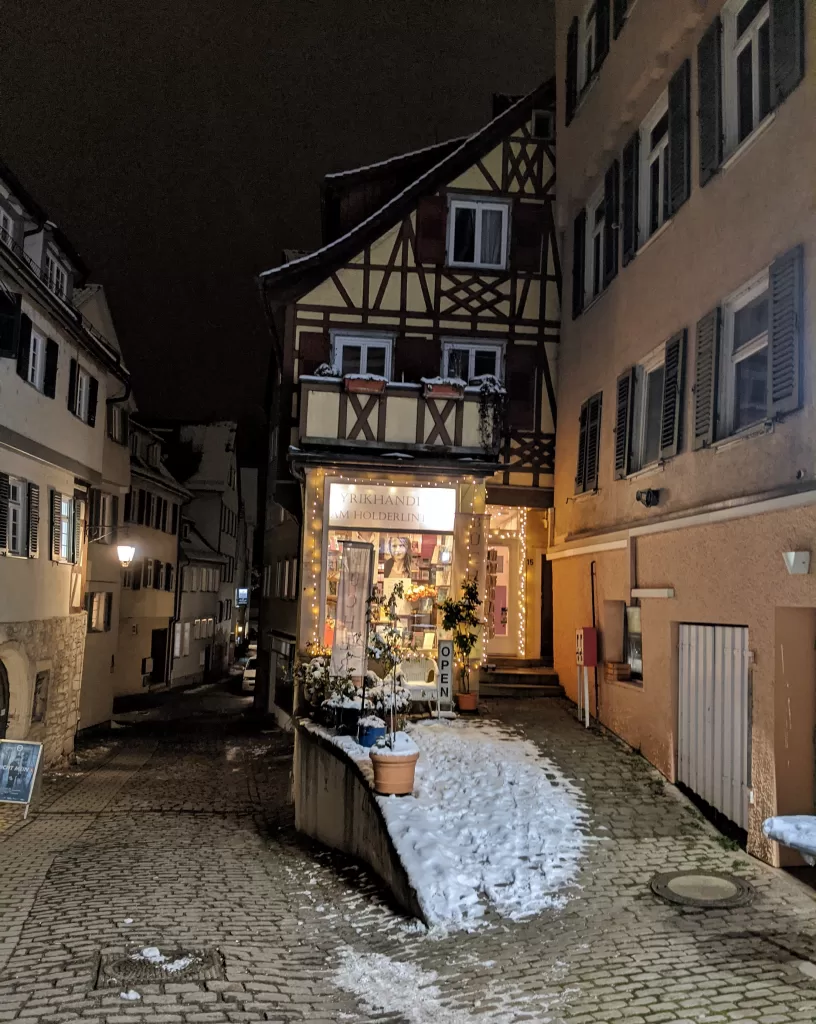 Once you cross the bridge, you find yourself at the threshold of the Altstadt, the old town. I always encourage anyone visiting Germany, or any European country for that matter, to explore these historical centers. Tübingen’s old town is uniquely positioned – built next to a river and on a hill, it offers both natural protection and a bounty of resources. The streets here are a constant adventure, you’re either climbing uphill or descending. The stone pathways and the houses, some partially hidden behind others, transported me back to medieval times. And if you’re in a hurry, numerous stairways offer shortcuts to your destination.
Once you cross the bridge, you find yourself at the threshold of the Altstadt, the old town. I always encourage anyone visiting Germany, or any European country for that matter, to explore these historical centers. Tübingen’s old town is uniquely positioned – built next to a river and on a hill, it offers both natural protection and a bounty of resources. The streets here are a constant adventure, you’re either climbing uphill or descending. The stone pathways and the houses, some partially hidden behind others, transported me back to medieval times. And if you’re in a hurry, numerous stairways offer shortcuts to your destination.
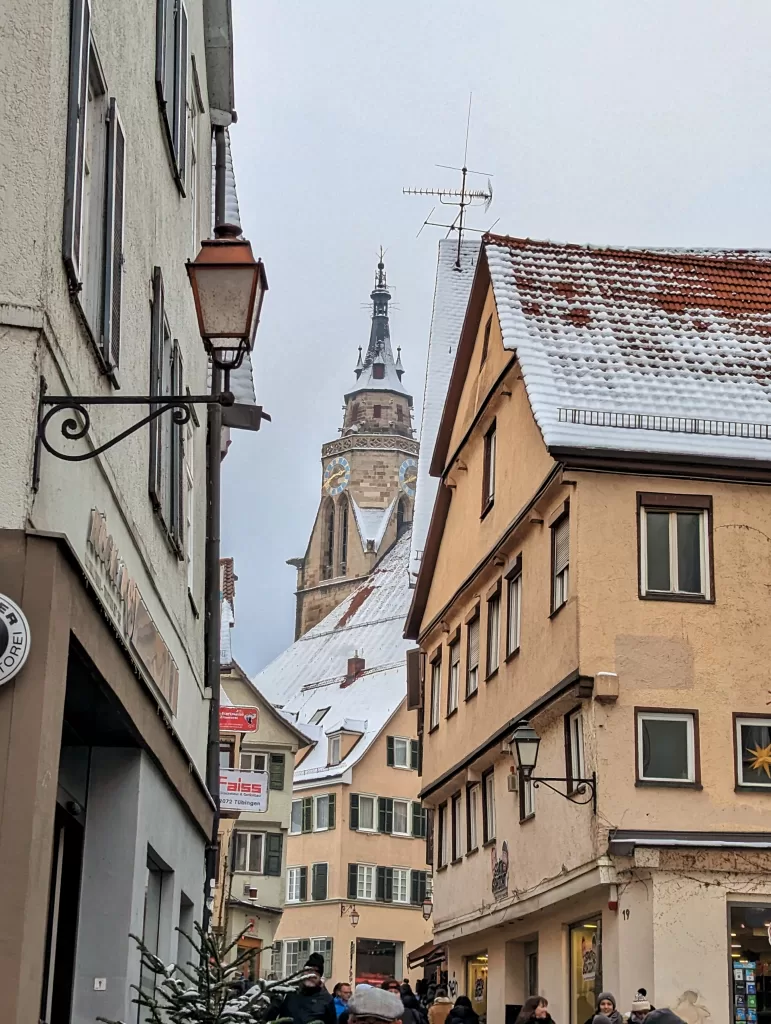 For those who know me, it’s no secret that I’m a small-town person at heart, even though I live in a city. I often find myself urging people to skip the big cities when they visit Germany and to experience the charm of smaller towns instead.
For those who know me, it’s no secret that I’m a small-town person at heart, even though I live in a city. I often find myself urging people to skip the big cities when they visit Germany and to experience the charm of smaller towns instead.
In the next part of this series, we’ll be exploring Schloss Lichtenstein, the castle that was the main focus of my birthday trip. Stay tuned!
Tübingen: A Scenic Town in Baden-Württemberg

In this installment of my birthday trip series, I’m excited to introduce you to a small, yet charming town – Tübingen, located in the state of Baden-Württemberg. Situated on a hill and crisscrossed by a river that runs through its medieval old town, Tübingen is a place that has won my heart. Adding to its charm is the influx of young energy from students at Universität Tübingen.
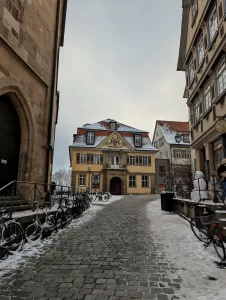
Although the initial purpose of our trip was to visit the nearby Lichtenstein Castle, Tübingen was only supposed to be a pit stop for meals. However, the town’s beauty unexpectedly seized my attention and refused to let go.
Making our way from Tübingen Hbf (main station) to the old town, we stumbled upon a house that was a canvas for graffiti. But this wasn’t just any graffiti—it was art with a message. The words “Kein Mensch ist illegal” (No human is illegal) stood out, making a progressive statement.

Before crossing the bridge over the river, we were greeted by traditional half-timbered houses (Fachwerkhaus), their facades painted in colors. They evoked scenes from the animated film Howl’s Moving Castle.

A slight turn of the head to the right, the keep and towers of a castle emerged from behind the trees. I was amazed at the architectural diversity that this small town offered within just a 10-minute walk.

Next to the bridge, known as Neckarbrücke, is a slender island in the river. This natural space serves as a communal playground for the town’s residents, offering opportunities for walks, relaxation by the river, and even snow play in the winter. While the island is a gem, Tübingen also boasts several other parks that contribute to its natural beauty.

Once you cross the bridge, you find yourself at the threshold of the Altstadt, the old town. I always encourage anyone visiting Germany, or any European country for that matter, to explore these historical centers.

Tübingen’s old town is uniquely positioned – built next to a river and on a hill, it offers both natural protection and a bounty of resources. The streets here are a constant adventure, you’re either climbing uphill or descending. The stone pathways and the houses, some partially hidden behind others, transported me back to medieval times. And if you’re in a hurry, numerous stairways offer shortcuts to your destination.

For those who know me, it’s no secret that I’m a small-town person at heart, even though I live in a city. I often find myself urging people to skip the big cities when they visit Germany and to experience the charm of smaller towns instead.
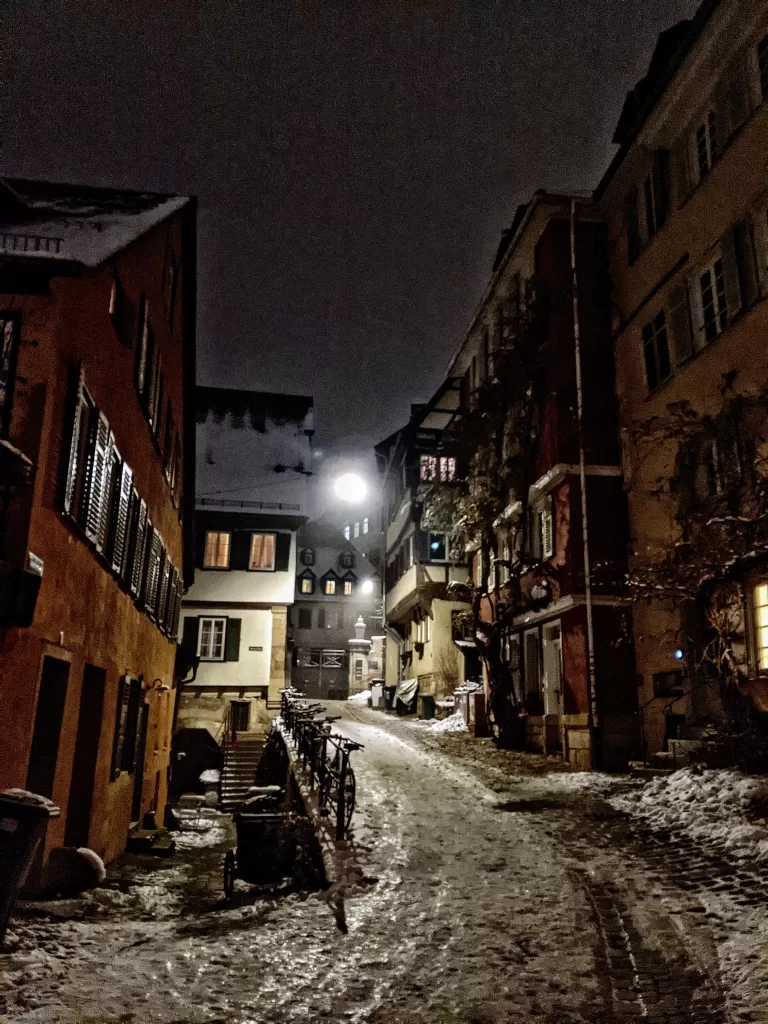
In the next part of this series, we’ll be exploring Schloss Lichtenstein, the castle that was the main focus of my birthday trip. Stay tuned!